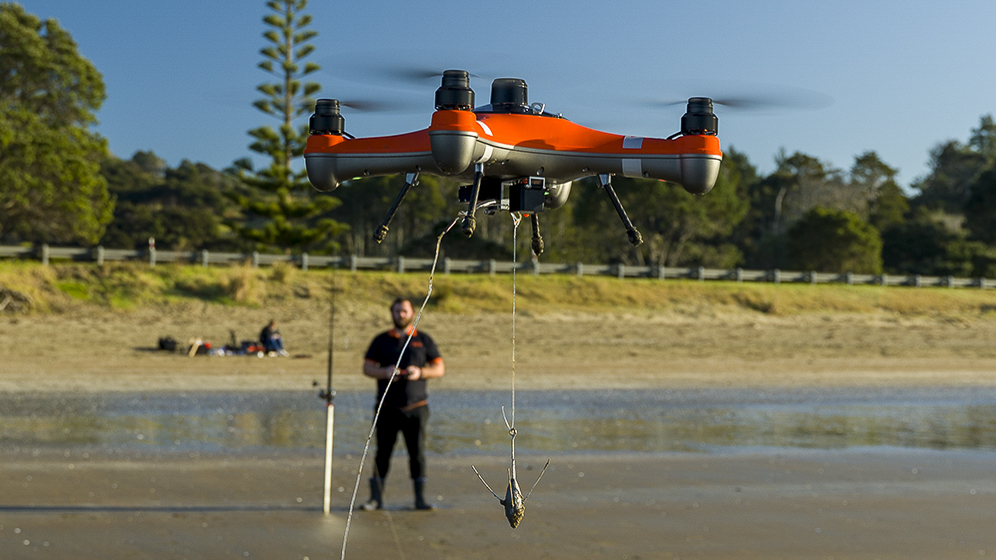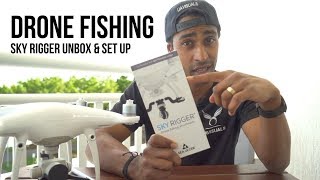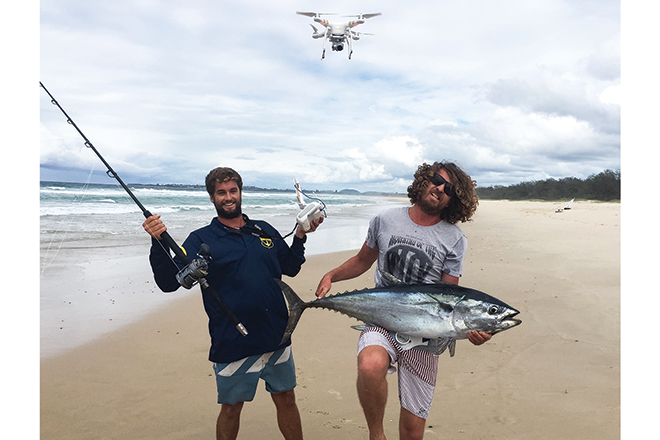
This article will discuss the basics behind a drone fishing system. We'll also talk about what to watch out for when you choose your drone, the battery life, and the payload. Then, we'll discuss some ways you can get the most from your drone. Keep reading to learn more. You will soon have the drone that you dream of! Let's go !... and maybe catch some fish!
Basic drone fishing equipment
To begin drone fishing, you'll need a good selection of hooks. The fishing line should have a doubled length and be either mono or braided. To attach a Cat's Paw Loop or Uni Knot to the line, you should tie it. You will need a sinker that weighs between 2 and 8 ounces as well as hooks to attach to the second section. Attach the snap swivel's lead loop to your drone's end loop.
There are many methods to make a fishing helicopter. An easy way to make a fishing drone is to attach a hook onto the drone's landing gear. Then spin the line until the line is released. Another low-cost option is to use a dropper and drop line. The dropper lets you keep the main line down below the drone and not get tangled with the propellers. Accessories such as docks and batteries can be added to fishing drones.
You will need additional equipment once you have bought the basic drone fishing gear. A fishing line that is approximately 700m long, as well as a bait-dropping apparatus are required. These are all optional extras, but will make your drone fishing experience more enjoyable. A good drone will give you a clearer view of your surroundings, and you'll be able to spot fish more easily.

Payload for drone fishing equipment
You need to know the safety precautions that must be taken if you plan to catch a fish with a drone. Your drone should not be flown in strong winds or rain. Here are some steps to follow:
First, ensure your drone has a strong carrying capacity. You can't load it with heavy lures, braided or heavy line. If you are fishing near the seaside, wind can blow the drone off course. Also, it's important to verify local regulations and laws as some may prohibit you from fishing with a drone. After you have decided to go fishing with your drone, it is important to make sure that the drone has enough carrying capacity.
Next, determine the accessories that you'll need for your drone. To reduce the weight distribution issues, it is a good idea to use a rigging system with a central attachment point. The best attachment points for drones are motor struts, landing gear, or legs. Avoid attaching any payloads to the camera or gimbal as these could cause damage. A simple solution is to tie a length of fishing line from one corner to the other. This can be secured with tape to prevent it from falling out.
Battery life of drone fishing equipment
Before you go fishing with the drone, check that the batteries are charged and all other equipment is working properly. This will keep your drone's battery charged and allow you to fish instead of worrying about charging it. You may be able to charge your drones using solar panels or batteries from your car. Start out by having fully charged batteries. This will ensure your drone is ready for flight as soon as your reach your fishing spot.

The drone's flight time is another important aspect to consider. While some drones can fly longer than others, the average drone can fly for around twenty-two mins. This is a great option if you plan to spend hours on the ocean with your drone. A drone that has limited endurance is likely to be unusable and renders it impossible to catch fish.
After setting up your fishing rod, attach the fishing clip to the drone's legs or motor struts. Attach the bait and line to the drone. Make sure that you lock your reel before you fly your drone. Once you are ready, unlock it. When you take the line out, tension builds and the drone drops the bait in the water. Remember to charge the battery after every use, or it may not work properly.
FAQ
Do drones fall under the control of the FAA?
The FAA is responsible for all aspects of drone operation, including certification requirements, safety standards, and licensing procedures.
Can I fly my drone around my neighborhood?
Yes! These are called UAVs, or unmanned aerial vehicles. There are several types of drones available for sale today, from small quadcopters to large fixed-wing aircraft. The FAA has recently issued new rules regarding the commercial use of UAVs, which means you can now legally fly them for business purposes. Be aware that UAVs operating near airports could cause interference to air traffic control systems. You must get permission from the authorities before you can fly one.
What is the law about drones flying on private property?
The FAA has recently issued new rules for commercial drone flights. These rules are only applicable to UAVs that weigh less than 55 pounds and fly below 400 feet above ground. Commercial operators must register with the FAA and obtain a license from the agency. They also need permission from local authorities when operating near airports or other restricted areas.
What kind of batteries does a drone use?
Drones are powered by lithium-ion battery. A drone typically uses between 3 to 6 volts.
How can I keep drones out of my house?
Drones are becoming more common for home surveillance. However they can also be a threat to privacy or security. To avoid drone attacks, install motion sensors around the property. They will detect any unapproved flying objects.
Statistics
- According to ZipRecruiter, the minimum hourly wage of drone pilots is $20. (thedroneu.com)
- According to Indeed, a drone pilot gets paid $25.73 per hour on average in the US. (dronesgator.com)
- According to the multiple listing service (MLS), houses and apartments with drone photographs are up to 68 percent more likely to sell than those without pictures. (thedroneu.com)
External Links
How To
How to Fly Drones with Beginners
A drone is a remote-controlled aircraft used for aerial photography, cinematography, surveillance, scientific research, and hobby purposes. The technology behind drones has been around since World War II. DJI's Phantom series quadcopters were first commercially available in 2010. Since then, there have been many different types of drones available, from beginner-friendly models like the Parrot AR Drone 2.0 to professional-grade multi-rotor craft like the DJI Mavic Pro.
You can fly a drone in many different ways, including:
-
Remote control – This is when you attach a device to your hand that allows you to control the drone's flight path. There are two main types of controllers: On/Off switches (like a radio) and joysticks.
-
Manual Control - This method uses a smartphone app to remotely control the drone using GPS coordinates. Follow the instructions of the app to track the exact location you want the drone go.
-
Autonomous flight - The drone takes over the piloting duties. It's basically flying autonomously without any human intervention. It must have a builtin camera, sensors capable of taking images and data to enable autonomous flight.
-
Triggered flight - This is similar to manual control except that the pilot sets up a preprogrammed route and the drone follows the route until it reaches its destination. The drone automatically lands once the route has been completed and returns to the base.
-
Landing Gear - Some drones come equipped with landing gear that allows them to land safely if they lose power or run out of battery during flight.
-
Goggles - Pilots may wear goggles to shield themselves from flying debris.
-
Camera - You can capture photos and videos with your drone from the air.
-
Obstacles - Some drones can be equipped with obstacle avoidance systems that prevent them from crashing into obstacles.
-
Speed – Some drones can reach speeds in excess of 40 mph.
-
Battery Life - Most drones are capable of lasting between 20 minutes and three hours, depending on the power that you use.
-
Distance - Some drones can travel up 30 miles depending on the model.
-
Power source - Some drones need an external power source, while others use internal batteries.
-
Weight - Some drones can be as light as 1 pound while others can reach 4 pounds.
-
Size - Drones range from small devices that fit in one's palm to large crafts that weigh more than 50 pounds.
-
Price - Drones come in a variety of price categories, including high-end models which can run into the thousands and low-cost options that can start at $100.